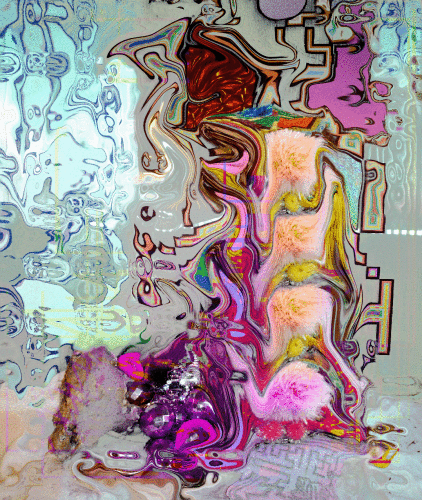Anders A
14 May - 09 Oct 2016
ANDERS A
The Least and Outermost
14 May – 9 October 2016
Curator: John Peter Nilsson
Anders A is like a digital archaeologist who digs his visual world out of a modified memory. The artist says he feels just as comfortable in a broken-up pixelated fake world as he does in a forest, and that his modified memory is simply a jumble of fiction and reality. Yet there is no contradiction here. Just as this passively displays a contemporary state, it also brings forth an active creative desire.
Modified Memory
During the 1980s, Anders A made a series of sculptures that looked like mutations created from Venus of Willendorf and astronauts. These were timeless, yet paradoxically also ripe with history. The figures in the artist’s new works have a similar appearance: Botticelli’s Venus meets a creature from Alien...
It is, however, the general state of nervous anxiety evoked by the new works that engages, a state that also defines the present day. Anders A adjusts both his own and our perceptual ability to stay present within the myriad known and unknown impressions and expressions that flicker in and out of our daily lives. We are constantly confronted by noise that is resolutely altering our behaviour. Anders A does not view this as a problem. On the contrary, he welcomes this state.
As the title of the exhibition suggests, he magnifies this state, both in works hanging on a wall and in moving gif images enveloped in hypnotic sound. He lays bare a dynamic anxiety in the works. Not an apocalyptic anxiety; rather an anxiety that generates energy in order to search for and mould different kinds of extremes, for example, in his persistent use of low-status materials that he upgrades to “high status”.
Anders A is like a digital archaeologist who digs his visual world out of a modified memory. The artist says he feels just as comfortable in a broken-up pixelated fake world as he does in a forest, and that his modified memory is simply a jumble of fiction and reality. Yet there is no contradiction here. Just as this passively displays a contemporary state, it also brings forth an active creative desire.
The Least and Outermost
14 May – 9 October 2016
Curator: John Peter Nilsson
Anders A is like a digital archaeologist who digs his visual world out of a modified memory. The artist says he feels just as comfortable in a broken-up pixelated fake world as he does in a forest, and that his modified memory is simply a jumble of fiction and reality. Yet there is no contradiction here. Just as this passively displays a contemporary state, it also brings forth an active creative desire.
Modified Memory
During the 1980s, Anders A made a series of sculptures that looked like mutations created from Venus of Willendorf and astronauts. These were timeless, yet paradoxically also ripe with history. The figures in the artist’s new works have a similar appearance: Botticelli’s Venus meets a creature from Alien...
It is, however, the general state of nervous anxiety evoked by the new works that engages, a state that also defines the present day. Anders A adjusts both his own and our perceptual ability to stay present within the myriad known and unknown impressions and expressions that flicker in and out of our daily lives. We are constantly confronted by noise that is resolutely altering our behaviour. Anders A does not view this as a problem. On the contrary, he welcomes this state.
As the title of the exhibition suggests, he magnifies this state, both in works hanging on a wall and in moving gif images enveloped in hypnotic sound. He lays bare a dynamic anxiety in the works. Not an apocalyptic anxiety; rather an anxiety that generates energy in order to search for and mould different kinds of extremes, for example, in his persistent use of low-status materials that he upgrades to “high status”.
Anders A is like a digital archaeologist who digs his visual world out of a modified memory. The artist says he feels just as comfortable in a broken-up pixelated fake world as he does in a forest, and that his modified memory is simply a jumble of fiction and reality. Yet there is no contradiction here. Just as this passively displays a contemporary state, it also brings forth an active creative desire.

